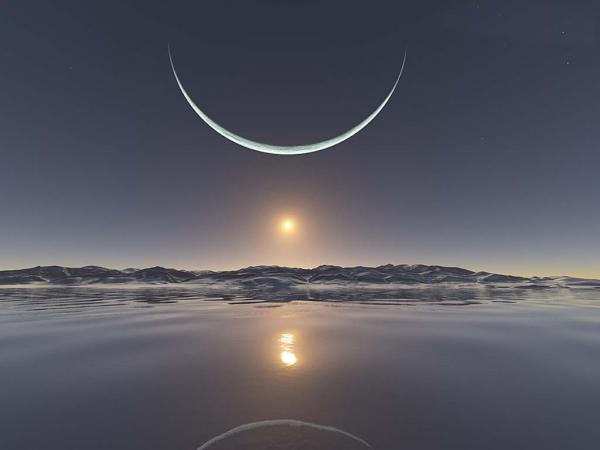This is a time to celebrate newness: a new moon cycle, a new spiritual cycle, a shift of energy.
“Od Yavo Shalom Aleinu / Ve al kulam / Salaam Aleinu
ve al kol ha olam / Salaam”
Sunday, December 21, is Winter Solstice, which you may also call Yule or Yuletide. Lady Moon is new on December 21; a new cycle is beginning. Fix a sprig of holly hear the front door; this invites good fortune for the coming year. Including holly, ivy, and mistletoe in your decorations also invites Nature Sprites to join your celebrating.
The longest night and shortest day of the year, this is a time to celebrate newness: a new moon cycle, a new spiritual cycle, a shift of energy, a welcome to more daylight time. This is a fire festival. Yule signifies the return of Lord Sun and fire reinforces his growth. Burn candles, have a Yule Log, cook over open flames outdoors, whatever is easiest for you to do to incorporate fire energy into your celebrations.
Yuletide begins on December 20, “Mother Night,” and lasts through December 31, 12 days later, which some lore says is what inspired the carol, “The Twelve Days of Christmas.” Another tradition says that the 12 days of Christmas refer to the time between December 25 and January 6, Epiphany, which is when gifts are given in parts of Europe. You may celebrate your 12 Days of Christmas whenever and however you most enjoy doing so.
Serve your guests Wassail, roast meats, and oranges as well as whatever pleases you as you create a bountiful feast. The Wheel of Life begins its yearly cycle at Winter Solstice; it is a time to celebrate!
Use the colors red, white, and green in your decorations and dress. Hang mistletoe over the front door as a signal that no arguments are permitted under your roof. Druids viewed mistletoe as a plant of peace; by entering under the mistletoe, guests gave their promise that there would be no feuding or fighting. This led to the custom of kissing under the mistletoe: a kiss of peace.
Many of the customs and images associated with Yule and Christmas derive from older traditions. Saturnalia was when Romans gave gifts to each other; Winter Solstice signified the birth of the Sun God in many traditions, including the worship of Mithras, Kronos, and certain trees held in reverence by Celtic peoples. Much of Santa Claus’ wardrobe evidences these associations with the Long-Ago: the red clothing, the sprig of holly in Santa’s hat, the team of eight reindeer (symbolizing the eight spokes on the Wheel of Life as well as the Horned God). You and your guests may find it interesting to discuss the way older traditions and observances have become incorporated into the now-popular Christmas imagery.
Be sure at some time in your celebrating to take a moment to be still and quiet as you give thanks for the year that has passed and welcome the year that is to come. Meditate on balance, harmony, and beauty: you are surrounded by it.
[Kate Braun was a contributor to the original Rag. Her website is www.tarotbykatebraun.com. She can be reached at kate_braun2000@yahoo.com. Read more of Kate Braun’s writing on The Rag Blog.]



















Thanks, Kate! I googled the phrase you start with, “Od Yavo Shalom Aleinu.” It is a song popular with Israeli youth movements and symbolizes a call for peace and an end to the Arab-Israeli conflict. Cool! Here is the Wikipedia article, and here is the music sung on YouTube.